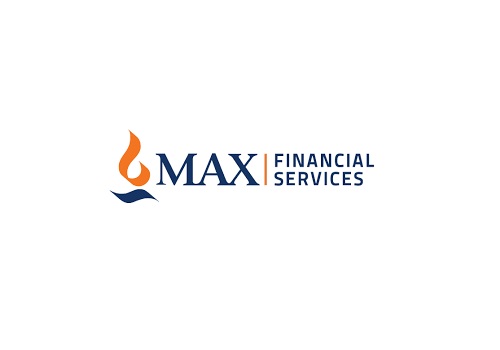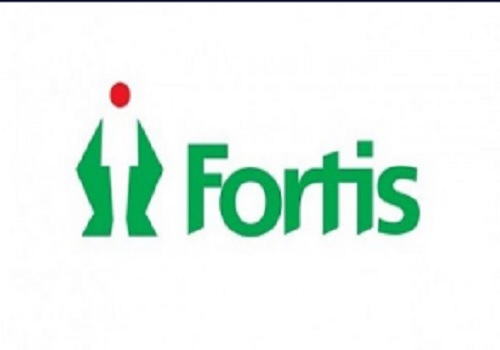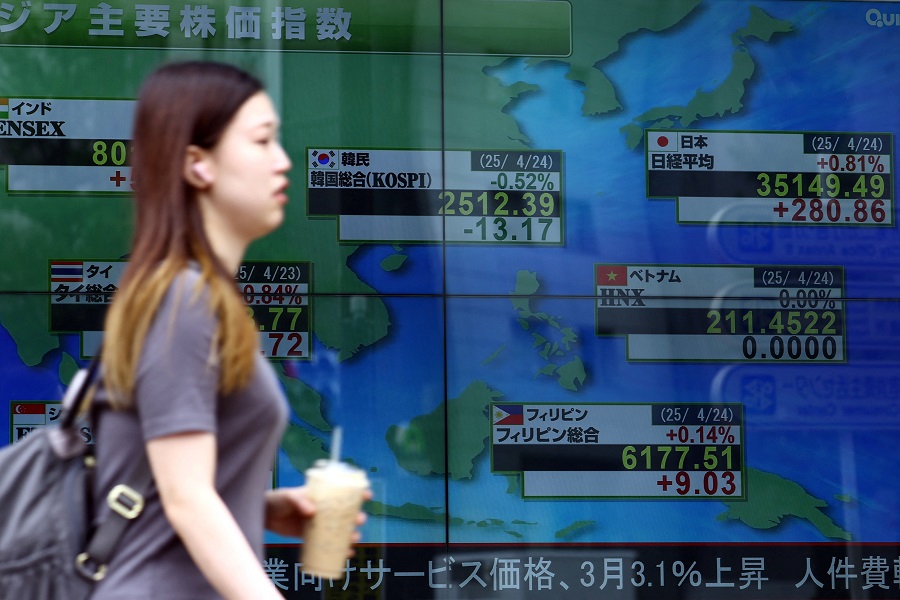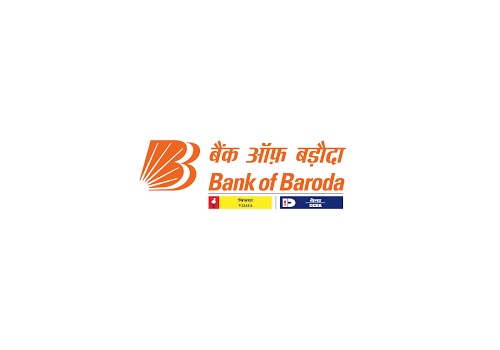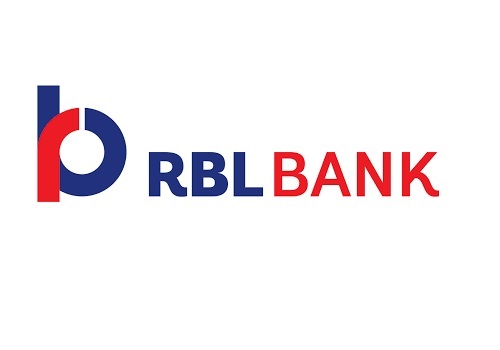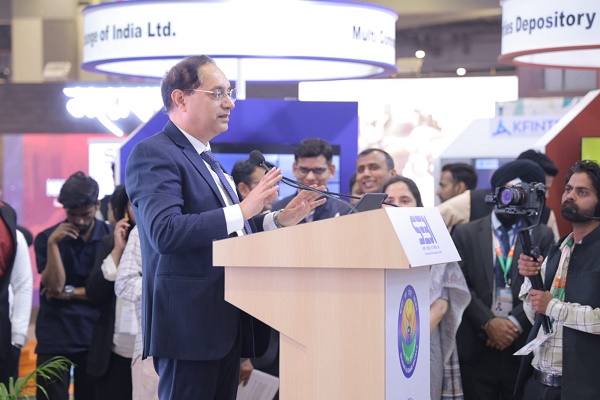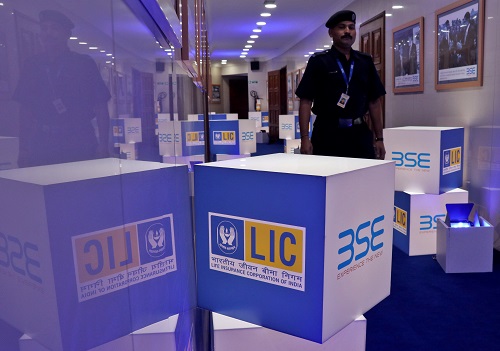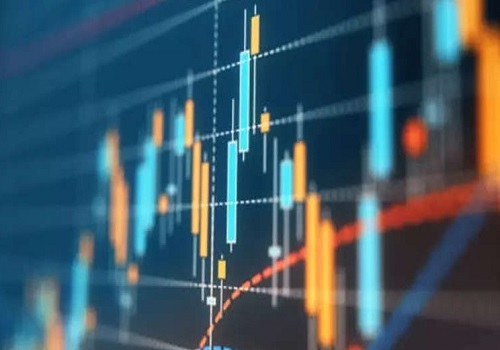Banks, Diversified Financials: Strong on expected lines across BFSI Quarterly review 4QFY24 by Kotak Institutional Equities

Strong on expected lines across BFSI
Earnings for the quarter across banks, NBFCs, capital market players and insurance have held up well: (1) Banks—one-offs driving earnings beat, but loan growth is stable; peak NIM contraction cycle is probably behind and asset quality is still not showing any signs of worry. (2) NBFCs reported strong loan growth along with improvement in asset quality. NIM trends were mixed with visibility of flattening. (3) Capital market companies benefited from strong markets and steady net inflows in equity.
Past the peak NIM contraction cycle; asset quality metrics are holding up well
Banks under coverage delivered ~50% yoy earnings growth, led by ~33% yoy growth in non-interest income and a modest ~3% yoy increase in operating cost. Note that the base impact is still favorable (loss for Axis Bank, merged book for HDFC Bank and lower wage settlement costs for SBI). Loan growth is still showing stable trends (adjusted for HDFC Bank merger) at ~15% yoy. Credit cost is still running well below the long-term average, led by lower slippages. RoE is closer to long-term averages for all banks. Cost of funds appears to have peaked, which implies that the headwinds are lower from hereon, barring a reversal in the rate cycle. Recoveries from bad loans for PSU banks (especially for CBK, UNBK and PNB) remained robust. SFBs have seen some moderation in loan growth to mid-20s, but asset quality is not showing any concern yet. We prefer to own the frontline banks at this stage.
Setting stage for a strong year
Non-banks under coverage reported strong performance in 4Q and FY2024, sustaining high growth and improving asset quality ratios in almost every bucket. NIM trends are mixed with visibility of flattening. While most companies enter FY2025E with a softer growth guidance, we believe that strong asset quality performance will encourage further investments in growth, providing an upside to our growth estimates. We have raised growth estimates for most NBFCs after the 4Q results, leading to earnings upgrades. Remain assertive on Shriram, Chola and LICHF, and Aavas and Home First among affordable HFCs.
Capital markets: Equity market tailwinds continue
AMCs had a strong quarter, given tailwinds of equity market growth and strong flows. All four AMCs reported over 30% yoy growth in core earnings. However, operationally, HDFC AMC and Nippon continue to report stronger flow trends. Intermediaries (CAMS/Kfin) also benefited from strong equity AUM growth, stable yields and pick-up in non-MF revenues (~30% yoy core earnings growth). 360 One had relatively muted performance (~5% core earnings growth), reflecting expected compression in yields and higher expenses. Among rating agencies, ICRA reported better earnings growth (~20% yoy) than CRISIL ((-)6% yoy).
BANKS: ANOTHER GOOD QUARTER; OPERATING PROFITABILITY HOLDS UP
Asset quality: NPL ratios stay on downward trend; bad loan recoveries continue to boost profitability
4QFY24 was another quarter where the asset quality for banks continued to improve. The proportion of delinquent loans on the balance sheet continued to decline. The stock of NPLs has been steadily declining sequentially for PSU banks (Exhibit 8). Even the non-NPL stress book (restructured advances) has been broadly under control and is not a source of worry.
Gross slippages for the sector continued to be in control. We understand that incremental stress formation in the banking system is low. Slippages for frontline banks are near or even below pre-Covid levels. Asset quality is unlikely to be a concern for most banks in the medium term, unless there is a sharp macroeconomic downturn—a relatively low probability event, in our view. We expect incremental slippages to sustain at low levels.
At the same time, recoveries and upgradations continued to be healthy, resulting in a simultaneous write-back of provisions as well. Many banks have been offering various settlement schemes to delinquent customers to resolve stress on the balance sheet. Most banks have been opportunistically making higher provisions for legacy stress (to reduce net NPA) during the current benign asset quality period. This can result in a lower requirement for provisions in subsequent quarters. However, note that the pool of gross NPA itself is gradually declining (Exhibits 6 and 7), which implies that bad loan recoveries (and hence, provision reversals) are also likely to decline steadily.
There is some uncertainty today about the impact from migration to the new ECL regime and impact from provisions for project finance exposures (based on the recent draft circular published by the RBI). However, we do not see any immediate reason to change our view on asset quality or credit cost for the banking system. We believe that we are in a period where slippages and credit cost for the banking system will stay low for some more time. Nevertheless, we remain watchful about how the situation evolves.
Along with recoveries from GNPA, PSU banks are also seeing healthy recoveries from written-off accounts, which are reported under the revenue line (non-interest income or interest income). This is discussed in a subsequent section of the report.
Credit growth is quite broad-based; stood at ~21% yoy for banks under coverage
For banks under coverage, credit growth stayed healthy at ~21% yoy in 4QFY24—down marginally from ~22% yoy at the end of the previous quarter. Growth was strong for private banks (~30% yoy) and healthy for PSU (~14% yoy) banks. According to the latest RBI data, overall credit growth for the banking system has stayed healthy at ~20% yoy in May 2024, supported by the merger of HDFC Ltd into HDFC Bank, while it stood at ~16% adjusted for the impact of the merger.
Growth in loans to large corporates continues to be modest at 7% yoy in April 204. The MSME industry segment has been seeing robust credit growth over the past few quarters, but growth has moderated now to ~15% yoy. Retail credit growth has stayed healthy at ~27% yoy (17% yoy adjusted for HDFC Ltd merger), with housing credit up ~37% yoy (~18% yoy, adjusted) and vehicle loans up ~17% yoy. Credit card balance growth has also stayed strong at 23% yoy, whereas loans against gold jewelry were up 12% yoy.
We saw credit growth staying broad-based during 4QFY24. While the frontline private banks continued on a robust growth trajectory, even the large PSU banks showed healthy growth of 11-16% yoy. At the same time, some regional private banks also showed meaningful recovery in credit growth. Segmental credit growth data reported by individual banks also indicates that credit growth has been relatively more broad-based across sectors of retail, MSME and large corporate, but being led by retail. We expect retail and MSME to continue to drive growth as well.
NIM declined for most banks qoq, but further contraction is expected to be low
We observed banks showing a declining NIM trend during 4QFY24. Yields were either flat or slightly higher qoq, with some amount of re-pricing of MCLR-linked loans. However, re-pricing of deposits was relatively faster. Most banks have indicated that most of the re-pricing of term deposits is largely complete. As a result, a further increase in cost of deposits is expected to be low, resulting in limited further NIM contraction.
At a system level, deposit growth stood at ~13% yoy (similar even after adjustment for the HDFC merger). Thus, deposit growth continues to be outpaced by credit growth at 20% yoy. We note that PSU banks stand with relatively lower CD ratio and hence, better positioned on the liquidity front.
According to the latest data from the RBI, term deposit rates were up ~190 bps to ~6.9% from the bottom of ~5.0%. Both private and PSU banks have hiked their term deposit rates meaningfully over the past year, but we have not seen many hikes in recent months. Wholesale deposit cost (as measured by CD rates) have now broadly stabilized.
Healthy trends in non-interest income; recoveries from TWO pool supported profitability
Most banks reported healthy treasury income during 4QFY24. HDFC Bank saw sharp increase due to the sale of stake in HDFC Credila (pre-tax gain of Rs73.4 bn). Fee income growth was also healthy for the quarter, given the business momentum. At the same time, recoveries from written-off accounts remained strong for select PSU banks, thereby supporting profitability. Similarly, card spends have been on a steady growth path, which also supported fee income growth for card issuers.
Operating expenses: Catch-up provisions toward 12th bipartite settlement are broadly complete
Most banks reported modest to high growth in operating expenses during 4QFY24. Axis Bank reported a yoy decline because the base quarter (4QFY24) included expenses related to the write-off of goodwill created during the amalgamation with Citi. PSU banks have seen inflated staff expenses in the past few quarters, led by the completion of catch-up provisions for the 12th bipartite settlement. With these catch-up provisions now largely complete, we can expect the growth in operating expenses to moderate hereon.
NBFCs: Setting stage for a strong year
Non-banks under coverage reported strong performance in 4Q and FY2024, sustaining high growth and improving asset quality ratios in almost every bucket. NIM trends are mixed with visibility of flattening. While most companies enter FY2025E with a softer growth guidance, we believe that strong asset quality performance will encourage further investments in growth, providing an upside to our growth estimates. We have raised growth estimates for most NBFCs after the 4Q results, leading to earnings upgrades. Remain assertive on Shriram, Chola and LICHF, and Aavas and Home First among affordable HFCs.
High earnings growth, driven by loan growth
Non-banks under coverage reported 17% to 72% earnings growth, LICHF declined on high base and MMFS has one-off provisions on account of large fraud. This is largely driven by 21-40% loan growth, NIM expansion in select cases driven by capital issuance. Credit cost remained benign, so did opex ratio. India Shelter (up 47%) and SBFC (up 72%) benefited from capital issuance and very high (35%+) loan growth. Home First (up 30%) and Five Star (up 40%) have also benefited from high loan growth. Shriram Finance’s high earnings growth (49%) accelerated on a low base of high credit costs.
AUM growth strong
Exhibit 48 shows that ex-PSU NBFCs reported 18% loan growth in FY2024, following 15% growth in FY2023. Exhibit 49 shows that NBFCs across the board have driven high growth, with vehicle finance up 26% (24% in FY2023); growth in diversified NBFC was strong at 25% (22% in FY2023). It appears that the pick-up in momentum over the past three years continues to benefit the sector; there is lead-lag between the pick-up in disbursements and loan growth. MFIs have moderated a bit to 26% in FY2024 from 28% in FY2023. Exhibit 53 shows that NBFCs under coverage (excluding LICHF) reported 21-40% loan growth; the momentum remains strong with 5-9%. Exhibit 56 shows that disbursements remain strong at 14-47%; 11% disbursements for MMFS are on a high base. Most companies have guided for moderation in growth, normalization from strong momentum in the past two years. Risks in unsecured and low growth in vehicle sales have been cited as the key reasons. With strong asset quality in secured loans, we expect companies to step up from 2Q and are poised for another strong year.
NIM—mixed trends
Trends in NIMs were mixed in 4QFY24, with either stable NIM (qoq) or marginal compression. This reflects trends in cost of borrowing, which were mixed. The rise in cost of borrowings qoq was mostly in affordable HFCs and Bajaj Finance (no PSL benefits). Most players suggest that the impact of the increase in risk weight for bank lending to NBFCs have low impact for NBFCs that are engaged in PSL loans. The cost of borrowings is up 17-76 bps yoy, with limited rise hereon. Select affordable HFCs have raised lending rates, though continue to guide for flat margins, as the final leg of the funding cost catch-up is pending. Muthoot Finance is also guiding for 30-40 bps pending borrowing-side hikes. Yields have been flat or swing based on product mix change. The benefit of rate hikes on fixed rate vehicle finance is not yet reflected.
Sequential trends in cost of borrowings are mixed, with a yoy rise of 17-76 bps; some catch-up is pending. Funding costs may inch up a bit among affordable players and low PSL players. Yields are showing slight pressure on affordable HFCs—stable in other segments. MMFS has shown pressure due to a changing business mix. Broadly, we seem to be closer to the end of NIM compression and expect flattening. While some borrowings cost inch up due to refinancing at higher rates, yield/fee income may support on the asset side.
Asset quality—going strong
Exhibits 64-67 show trends in asset quality. The gross stage-2 ratio is either stable or down, except MMFS and Chola. In both these cases, gross stage-3 loans are down sharply, reflecting a shift to gross stage-2 from gross stage-3. Gross stage-3 is down for most players as well. On absolute basis, Gross stage-3 loans have declined qoq. Gross stage-3 rise is high yoy only for high growth players, with negligible growth for most players. Gross stage-2 loans are down for most players, the yoy rise is only pronounced in high growth (35%+ loan growth) NBFCs, viz., Home First, India Shelter and Five Star.
Revising up in estimates
We have revised up our estimates for most players after 4Q results by 1-6%. The decline in Bajaj Finance reflects lower margin estimates. We have raised our loan growth estimate for most players. With strong asset quality performance, we expect growth to continue and provide an upside to our estimates. NIM estimates have been cut after the results to reflect a slower change in policy rates and some tail of rate hikes. We have marginally tweaked up credit cost estimates, but raised opex estimates to reflect higher investments in growth.
Performance highlights of key diversified financial companies: 4QFY24
4 Aavas. Aavas’ 4QFY24 PAT was up 13% yoy and core PBT was up 5% yoy, which was 6% above estimates. Disbursements accelerated to 18% yoy ((-)2% to 13% over the past three quarters), leading to 22% growth in the loan book, i.e., within its guided range of 20-25%. However, profitability remains weak, with spread compression reflected by 7%/14% growth in NII (as compared with 22% loan growth) for the quarter/year. The company is keeping up its unbeatable asset quality trends, with 1+ dpd falling to record lows of 3.1% (peak of 6.5%), down 18 bps yoy; this is lower than management’s long-term guidance of 5%.
4 Aptus. Aptus reported PAT of Rs1.6 bn in 4QFY24, up 21% yoy and core PBT at Rs2 bn, which was up 19% yoy. Sequentially, calculated NIM compressed 25 bps, reflecting 15 bps of yield compression due to the changed book composition in favor of home loans and back-ended growth in 4QFY24. Credit cost was moderate at 0.4% in 4QFY24. Stressed loans were down 70 bps qoq in 4QFY24, driven by strong collection efficiency of 100.2% (99.5-99.7% in the previous three quarters). The gross stage-3 ratio moderated 15 bps qoq to 1.1%; on absolute basis, gross stage-3 loans were down 6% qoq to Rs933 mn.
4 Bajaj Finance. Bajaj Finance reported PAT of Rs38 bn in 4QFY24, which was up 21% yoy and core PBT at Rs60 bn, which was up 27% yoy. NIM was down 19 bps qoq to 10%, driven by 23 bps qoq decline in yields to 18.1% in 4QFY24. AUM growth was strong at 6% qoq driven by strong 10% qoq growth in SME and commercial lines. Operating expense growth was lower than AUM, leading to moderation in the cost-to-AAUM ratio to 4.1%. Stressed loans inched up 16 bps qoq to 3.6% in 4QFY24, driven largely by (1) an 11 bps qoq increase in the gross stage-2 ratio to 1.2% and (2) a 14 bps qoq rise in write-offs to 1.5%. Notably, the collection efficiency has dropped 6-33 bps in most segments.
4 Cholamandalam. Chola reported PAT of Rs10.6 bn in 4QFY24, up 24% yoy and core PBT at Rs15.5 bn, up 25% yoy. NII was up 33% yoy, driven by strong 37% AUM growth. Fee income was up 1.6X yoy and 27% qoq. NIM was flat qoq at 6.8%. Yield on loans was down 20 bps qoq, likely reflecting a mix shift, while cost of funds was almost flat qoq. Operating expense growth was high at 63% yoy, leading to elevated cost-to-AAUM ratio of 3.7% (3.3% in 3QFY24 and 3.1% in 4QFY23). Credit cost (% of AUM) was muted at 0.5% (1.1% in 3QFY24). Stressed loans were down 124 bps qoq to 5.9%, driven by a sharp 81 bps qoq decline in the gross stage-2 ratio and 38 bps qoq decline in gross stage-3 ratio to 3.5%.
4 Five Star. Five Star reported PAT of Rs2.4 bn, up 40% yoy and core PBT, up 43% yoy. NII was up 33% yoy, driven by 39% AUM growth. Margins were down 120 bps yoy, reflecting 75 bps higher cost of funds and an increase in balance sheet leverage; sequential margins declined due to reduction in liquidity buffers during the quarter (cash + investments down 7% qoq). Operating expense growth was moderate at 14% yoy, leading to moderation in the cost-to-AAUM ratio to 6.4%. The credit cost was elevated at 84 bps, driven by higher write-offs at 64 bps (1-16 bps in the previous four quarters).
4 Home First. HFFC reported PAT of Rs835 mn, up 30% yoy and core PBT at Rs937 mn, up 24% yoy. NII growth was at 18% yoy on strong AUM growth of 35% yoy. NIM compression of 104 bps yoy had a moderating effect. Reported spread was down 10 bps qoq, driven by 10 bps rise in cost of borrowings. Reported yields were flat qoq at 13.5%. Operating expense growth was lower than AUM growth at 23% yoy, leading to a 31 bps qoq decline in the cost-to-AAUM ratio to 2.5%. Credit cost was muted at 0.1% during the quarter.
4 India Shelter. India Shelter reported PAT of Rs777 mn in 4QFY24, up 47% yoy and core PBT, at Rs936 mn, up 47% yoy. NII was up 58% yoy, driven by 40% growth in the loan book and 133 bps yoy margin expansion. Reported spreads were up 10 bps qoq, driven by a 10 bps qoq rise in yields to 14.9%, cost of borrowings was flat qoq at 8.8%. Operating expenses were up 33% yoy and 9% qoq, in line with AUM growth (up 9% qoq), leading to qoq flat cost-to-AAUM ratio of 4.4%. Credit costs were moderate at 0.4%, in line with 0.3-0.5% reported in the previous four quarters.
4 LTFH. L&T Finance reported PAT of Rs5.5 bn in 4QFY24, up 11% yoy. NII was up 14% yoy in 4QFY24, driven by 6% AUM growth and 120 bps yoy expansion in NIMs. Retailization is up to 94%, leading to NIM expansion. NIM was flat qoq at 9.1% in 4QFY24. Retail AUM growth was strong at 7% qoq and 31% yoy in 4QFY24 to Rs800 bn, driven by 7-10% growth in micro loans, home loans and 2W finance. Operating expenses were elevated (up 25% yoy and 8% qoq) due to investment in retail product lines. Credit cost was moderate at 2.4% in 4QFY24 (2.6% in 3QFY24 and 2.4% in 4QFY23).
4 LICHF. LICHF reported PAT of Rs11 bn in 4QFY24, down 8% yoy and core PBT was up 8% yoy to Rs19 bn. NII growth was strong at 12% yoy due to 22 bps yoy NIM expansion. While retail home loan disbursement growth picked up to 15%, loan book growth was muted at 7% yoy due to lead-lag effect. The developer book was down 32% yoy due to higher recoveries dragging overall loan growth down to 4% yoy. A one-off change in gratuity calculation and wage revision on arrears led to an elevated cost-to-AAUM ratio of 54 bps in 4QFY24 (41 bps in 4QFY23 and 37 bps in 3QFY24). Credit cost was moderate at 60 bps, driven by elevated write-offs of 1.5%.
4 Mahindra Finance. MMFS reported PAT of Rs6 bn, down 10% yoy and core PBT at Rs11.7 bn, up 24% yoy. NII was up 135 yoy, driven by 24% loan growth, 74 bps yoy NIM compression had a moderating effect. NIM expanded 14 bps qoq, despite 21 bps qoq rise in cost of borrowings, likely due to drawdown of liquidity buffers. Calculated spread was down 20 bps qoq. Operating expenses were flat yoy, despite 24% yoy AUM growth. Credit cost was elevated at 1.4% in 4QFY24. Of the Rs3,415 mn of credit cost, Rs1,360 mn was due to fraud in the Northeast.
4 Muthoot Finance. Muthoot reported PAT of Rs10.6 bn in 4QFY24, up 17% yoy and core PBT at Rs14.8 bn, up 19% yoy. NII was up 15% yoy, driven by 20% AUM growth; NIM compression of 64 bps yoy had a moderating effect. NIM expanded 74 bps qoq to 11.6%, driven by a 48 bps rise in yields to 18.3% and 18 bps qoq decline in cost of borrowings to 8.4%. Operating expenses were up 9% yoy far lower than AUM growth of 20% yoy, leading to moderation in cost-to-AAUM ratio to 3.7% in 4QFY24 from 4.2% in 4QFY23. Credit cost was moderate at 0.5% in 4QFY24.
4 SBFC. SBFC reported PAT of Rs734 mn in 4QFY24, up 72% yoy and core PBT, up 62% yoy. Interest spread was 6.5% as compared with 5.8% in 3QFY24. This was largely due to reclassification of income on co-origination (~Rs63 mn) in interest income. NII growth was strong at 53% yoy, driven by 38% AUM growth and 159 bps yoy NIM expansion. Yield on loans (adjusted) was 17.2% (stable qoq). Cost of borrowings was almost flat qoq at 9.2%. Opex growth was lower than topline growth at 19% yoy, leading to moderation in the cost-to-AAUM ratio to 4.9% from 5.7% in 4QFY23 and 5.4% in 3QFY24. Credit cost was moderate at 0.8% in 4QFY24, driven by moderate write-off of 0.1% and flat coverage ratios.
4 Shriram Finance. Shriram reported PAT of Rs19 bn in 4QFY24, up 49% yoy and core PBT at Rs38 bn, up 20% yoy. NII growth was strong at 22% yoy, driven by 21% AUM growth. Spreads were down 27 bps yoy and 14 bps qoq to 7.75%, reflecting a sharp increase in cost of funds; yield expansion of 25 bps yoy reflects a shift in product mix. Operating expense growth was lower than topline growth at 11%, leading to a moderation in the cost-to-AAUM ratio. Credit cost was moderate at 2.3% in 4QFY24, driven by 21 bps and 24 bps qoq improvements in gross stage-3 and gross stage-2 ratios, respectively.
Asset/wealth managers: Stronger quarter for AMCs and RTAs
AMCs reported a sequentially stronger quarter, led by stronger markets and steady net inflows in equity. AUM growth to revenue growth translation was on expected lines. Revenue yields were supported by a stronger equity mix, but there were AMC-level variations due to year-end adjustments. RTAs reported stronger non-mutual fund revenue growth. 360 One reported a soft quarter in terms of net new money and retention yields, whereas P&L trends were largely in-line. All companies benefited from strong other income due to treasury/MTM gains.
4 360 One: FY2024 ends on a strong note. 360 One’s 4Q results beat expectations, with ~60% yoy PBT growth, driven by ~25% yoy recurring revenue growth and ~90% yoy transaction (including carry) income. Large gains in transaction revenues also pushed costs higher (~60% yoy), along with one-time variable costs toward new hires. Recurring AUM grew ~35% yoy (~3% qoq). The quarter had overall net outflows of Rs7 bn compared with Rs89 bn inflows in 3QFY24 and Rs270 bn in FY2024. Calculated retention yields on the recurring business were stable qoq at ~60 bps. The cost-income ratio was stable yoy at 48% ((-)150 bps qoq).
* We see FY2024 as a fortunate year, when strong tailwinds of MTM gains offset the effects of yield pressure and higher expenses. The company has invested in three fronts: (1) Strengthening leadership in UHNI, with senior hires aimed at expanding geographical coverage, (2) HNI/mid-market vertical, which offers a large market, with potential for higher yields and (3) global/offshore business to channel inbound flows. These investments have impacted cost ratios, with the FY2024 cost-income up ~300 bps at 49%.
4 ABSL AMC: Strong P&L; mixed operating trends. BSL AMC reported 30% yoy growth in core PBT (i.e., PBT-other income) due to 23% yoy revenue growth and 16% yoy expense growth, led by employee cost growth (27% yoy). Core cost-income was up qoq at 45%. Overall, AUM growth was 21% yoy (6% qoq), with equity AUM growth of 31% yoy (12% qoq).
* ABSL’s fund performance for the key equity funds we track has been weak over the past few quarters. While this is well-flagged, the company has delivered better-than-expected AUM growth in 4Q. This is in line with the company’s commentary that redemption pressure has eased progressively over the past few quarters. While these trends are encouraging, we would like some large flagship categories to drive flows as against sectoral/thematic funds. ABSL’s blended revenue yield improved marginally qoq to ~42 bps, driven by the mix shift toward equity (up ~200 bps qoq to 44%). The company did not indicate any impact of year-end adjustments to management fees unlike other listed players. ABSL yields are roughly 68 bps for equity, 23-25 bps for debt and 12-13 bps for liquid. In our assumption, we build in ~5% annualized decline in equity TERs.
4 CAMS: FY2024 closes on solid ground. CAMS reported ~40% headline PAT growth, with core PBT growth of ~35% yoy due to 25% yoy revenue growth and ~20% yoy operating expense growth. Key result highlights: (1) AUM growth of 33% yoy and ~10% qoq, with equity AUM growth of ~50% yoy and 14% qoq, (2) stable market share in overall (68%) and increase in share of equity segment (68%) market share and (3) EBIT margins improved to 42% (300 bps yoy), reflecting the operating leverage benefit in the core MF business and growth acceleration in the non-MF businesses. Share of MF RTA in overall revenues is 87% (from ~90% a year ago).
* Overall, MF revenue growth was 21% yoy (6% qoq), with asset-based revenues up 20% yoy (6% qoq) and non-asset-based revenues growing stronger at 27% yoy (9% qoq). Revenue yield on asset-based revenues declined 3% qoq to 2.4 bps of MF AUM. Higher yield decline in 4Q is unlikely to continue, and we would expect incremental AUM to revenue growth translation to be better aligned than what we have seen in the past 12 months. This business on a standalone basis is likely to generate EBITDA margins of 48-50%.
4 HDFC AMC: Yields decline sharply, though a one-off. HDFC AMC reported ~32% yoy earnings growth, driven by ~30% yoy revenue growth, ~60% yoy other income growth and ~18% yoy expense growth. Quarterly AAUM was up 36% yoy (11% qoq), with equity AUM up 58% yoy (16% qoq) and debt AUM up 16% yoy (down 1% qoq). Staff costs were up ~21% yoy, whereas other costs (incl. business development) grew ~16% yoy. The cost-income ratio (ex-other income) was down ~100 bps qoq to 19%.
* Blended 4Q revenue yield declined ~7% qoq ((-)6% yoy) to ~45 bps. The sharper yield decline is a result of year-end adjustments (true-ups) to align direct TER to commission payouts. While we anticipated this effect to play out, its impact has been higher than expected. The yield decline reversed, partly in April, with a starting base of ~47 bps yield. The strong equity AUM growth has led to a decline in equity yields to ~59 bps in 4Q (versus ~69/67/63 bps in 1Q/2Q/3Q). Debt and liquid yields were around 27-28 bps and 12-13 bps, respectively.
* HDFC AMC’s operating performance maintained its strong and steady performance. The fund performance across larger categories remained strong, with a large share of AUM in the top-2 quartiles for 1Y and 3Y returns. The customer acquisition pace continued to be strong, with ~45% share in net adds in the past 1Y. Monthly SIP flows (~70% yoy; 11% qoq) have grown at a significant premium to the industry (~35% yoy; ~9% qoq). The current run-rate of SIP flows would imply ~10% equity AUM growth in a year. While the company is seeing flow traction across channels, growth is relatively stronger in the direct and national distributor channel.
4 Kfin Technologies: Executing well amid positive tailwinds. Kfin reported strong core PBT growth of ~25% yoy and overall PAT growth of ~30% yoy. Revenue growth of 25% yoy was ahead of estimates, offset by higher expense growth of 25% yoy. Staff cost was up 25% yoy, but non-staff costs grew 20% yoy, led by investments toward technology and business development. EBIT margin was stable yoy at ~39%.
* MF RTA revenues grew 29% yoy and 7% qoq. Overall, AUM grew ~35% yoy and ~11% qoq, with stable market share marginally higher (~32%). Equity AUM growth was higher at 43% yoy and 13% qoq, with a marginal dip in market share (~33%) as compared with last year. The SIP market share declined to ~39% ((-)200 bps yoy). Market share trends are on expected lines, given the performance of large clients. MF RTA yields declined 4% qoq at 3.7 bps ((-)4% yoy). Yields are tough to predict over the short term due to several variables involved, but will continue to contract over the medium to long term due to the fee pressure faced by AMCs, along with high client concentration, which limits pricing power. Non-MF revenue growth was 16% yoy, supported by issuer solutions (~20%) and international/alternatives (48%), but offset by global business services ((-)20%; linked to US mortgages). Kfin’s execution in non-MF businesses has been excellent, with recent client wins across international, alternatives and issuer solutions enabling strong revenue growth, even as the company continues to build a healthy order book.
4 Nippon AMC: Strong quarter on all counts. Nippon AMC reported ~40% yoy core PBT growth on 34% yoy revenue growth, while expense growth was 25% yoy. Headline PAT grew ~70% yoy, helped by strong other income and a lower tax rate. MF AUM growth was ~45% yoy (14% qoq). Higher expense growth was led by staff and non-staff costs. Core cost-income was ~100 bps lower qoq at ~40% levels.
* Nippon’s equity funds have been delivering solid performance for the past ~2-3 years, with 80-90% of AUM in the top-2 quartiles across 1/3/5Y returns. Strong returns continue to drive market share gains in flows and overall AUM. Nippon’s flow market share (early double digits) has been tracking higher than its 7% AUM market share. The SIP flow market share has improved to ~12% from 8% back in 4QFY23. The SIP flow-rate for the book implies ~13% of opening AUM. Our assessment of daily flows in the past few months suggests a strong flow momentum toward small-cap diversifying into large and multi-cap funds as well. Blended revenue yields were flat qoq at 44 bps, as the positive mix effect (~50 bps higher equity) was offset by telescopic pricing changes on active equity (around ~63 bps), given the strong AUM growth, along with strong growth in ETFs (yields 10-15 bps). We build in 5-6% annual compression in yields, as we expect Nippon to deliver better-than-industry AUM growth and the current scale of equity AUM.
4 UTI AMC: Good quarter; operating trends largely unchanged. UTI AMC’s core PBT declined 47% yoy (15% qoq), driven by revenue growth of 18% yoy (10% qoq) and expense growth of 6% yoy (7% qoq). Overall, AUM grew 19% yoy (5% qoq), led by all segments (MF, pension and international). MF AUM grew 22% yoy (7% qoq). Core cost-income declined qoq/yoy to 64%. Other income increased yoy due to MTM gains.
* UTI’s operating performance has been impacted by weak equity fund performance, leading to outflows and market share losses. In 4Q as well, the fund performance (1/3/5Y) remained weak, with over 80% of AUM in the bottom two quartiles (for a sample of funds, see Exhibit 2). This has led to seven consecutive quarters of equity outflows in an industry backdrop of strong retail inflows. Our calculations suggest April flows remain weak as well. Apart from the performance, UTI’s equity portfolio was likely impacted by (1) a very high concentration with a few funds (50% share from three funds), where weaker performance is having a disproportionate impact and (2) while mid/smallcap funds have been out-growing overall industry AUM, UTI’s share in these categories (~15% of active equity portfolio) remains lower than peers. UTI has a lower-than-industry share of the SIP book in equity, which puts it at higher risk of bulk outflows. SIP trends for 4Q were positive, with an uptick in market share. UTI AMC’s blended MF revenue yield increased 4% qoq at 34 bps. Yields improved, despite a stable equity mix and a higher share of passive funds qoq. This is attributable to positive year-end adjustments to the management fee.
Rating agencies
4 CRISIL. CRISIL reported nearly flat PBT and EBIT in 1QCY24, led by weak revenues (3% qoq) and decline in operating margins to 24% ((-)100 bps yoy). Ratings (8% yoy) and Non-ratings (1%) witnessed weak revenue growth, while margin expansion in Ratings (50%, 300 bps yoy) was more than offset by a drop in Non-ratings (16%, (-)450 bps yoy). Revenue headwinds on large exposure to a global client base (~50-55% of revenues, in our view) in the financial sector remain a key growth risk.
* Ratings’ revenues grew 8% yoy ((-)4% qoq) in 1QCY24—revenues include the Domestic Credit Ratings business, along with the captive S&P’s support. Domestic Ratings’ revenues grew 12% yoy, slower than ~17% yoy growth in CY2023. Given CRISIL’s stronger presence in the corporate bond market as against bank loan ratings, revenue growth reflects a combination of 9% yoy growth in bond issuances versus ~17% yoy growth in bank credit. Overall, the segment’s full-year operating margins improved ~300 bps yoy to 50%.
* Non-ratings’ (Research, Analytics & Solutions) revenues grew 1% yoy (12% yoy in CY2023). The segment’s margin contracted sharply ((-)450 bps yoy) to 16%, which probably needs more clarity, if there are any one-offs. A recent annual report has called out reduced offshore support in the traditional sell-side research, offset by growth in areas such as risk, regulations and benchmarking. However, we are still surprised by a much weaker-than-expected 1Q.
4 ICRA. ICRA reported a ~15% yoy earnings decline, led by 11% yoy revenue growth, 17% yoy other income growth and higher ~30% yoy expense growth. While we await clarifications, expenses growth reflects a couple of expense items toward litigation costs, along with investment in preference shares of a subsidiary company. Adjusting for this, expense growth was likely at 11% yoy and EBIT growth at ~20% yoy. Tax rate was 20% in 3QFY24 compared with 18% last year and 32% in the previous quarter.
* The Ratings division’s revenues grew 11% yoy and 10% qoq. Bond Ratings’ revenues were likely impacted by the higher base of last year (although stronger qoq). Slowness in Bond Ratings was offset by growth in the banking credit channel. The company indicated that securitization volumes were impacted by the RBI’s revision in risk weights toward NBFC and unsecured lending. Ratings’ operating margins declined to 18% from 23% in 2QFY24 and 26% in 3QFY23, likely reflecting the impact of one-off costs routed through the Ratings division. Overall, Non-ratings’ revenues grew 11% yoy and 8% qoq, helped by an acquisition in 3QFY24. Within Non-ratings, Knowledge Services’ (~80% of revenues) revenues grew ~3% yoy and 1% qoq. This segment has largely derived revenues from services provided to the parent Moody’s rating business. We would watch out for the combined effect on growth from potential cyclical weakness and opportunities to increase the scope of work.
Above views are of the author and not of the website kindly read disclaimer
